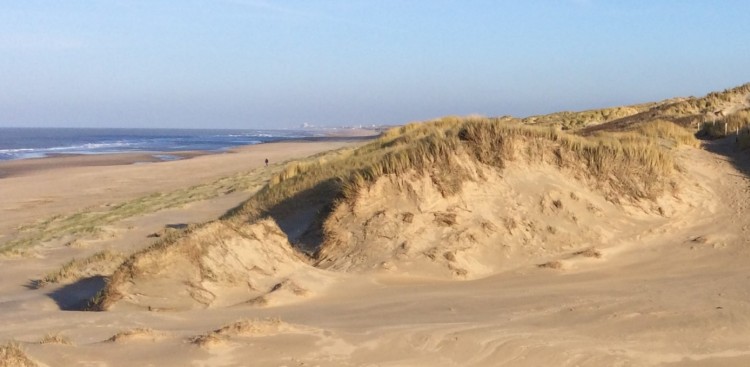A. Lynch1*, M. Riksen1, S.E.A.T.M. van der Zee1, J. Limpens1
1 WUR,
Introduction
With rising sea levels and changing weather patterns, dynamic dune coastlines may alter. For many reasons such as coastal safety, fresh drinking water supply, and tourism, we need to know how such changes will affect our dunes. In the joint WUR-TUDelft project DuneForce, we aim to create a modelling framework to predict coastal dune evolution on decadal time scales. Coastal dunes owe their existence to the interactions between sediment supply and dune-building grasses, which trap and bind the otherwise mobile sediment. Changes in rainfall patterns and availability of nutrients may alter the way in which these grasses grow, subsequently affecting dune dynamics. To this end we have initiated a large scale field experiment to study the effects of increased rainfall and nutrient availability on the establishment and growth of Elytrigia juncea and Ammophila arenaria, the dominant dune-building grasses in the Netherlands.
Methods
Running from March 2020 through till September 2021, the experiment covers 2.7 hectares of a typical Dutch beach and foredune landscape near Meijendel, South Holland. Here we will subject exiting stands of healthy Elytrigia and Ammophila on the embryo- and foredunes to a factorial combination of five levels of rainfall and two levels of nutrient treatments. Through monthly watering we replicate volumes of annual precipitation with return periods of up to 100 years, and with fertiliser additions we simulate increased nutrient availability as a result of mineralisation and atmospheric nitrogen deposition. In March 2021 we will add rhizome fragments to the treatment plots to investigate the effects of rainfall and nutrients on grass establishment, which initiates the formation of dunes. Responses of grass structure, composition and density will be measured, as well as the effects on local topography and soil properties.
Application
After completion in September 2021, we will translate the topographic and vegetation responses observed in the field into model parameters to allow simulation of spatial and temporal variability across dune landscapes.

Figure 1 Cross-section of the Meijendel study site, with Elytrigia-covered embryo dunes (left) and Ammophila-covered foredune (centre).
I. Surname1*, F.N. Another-Surname2 , Y. Next-Surname2
1 University Name, Country; 2 Organization Name, Country
* Corresponding author: mail.name@organization.org


